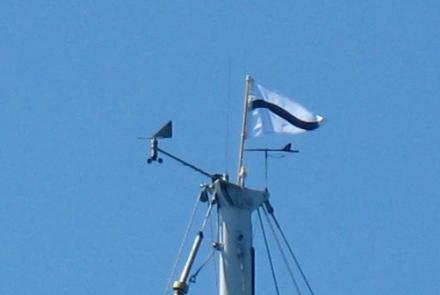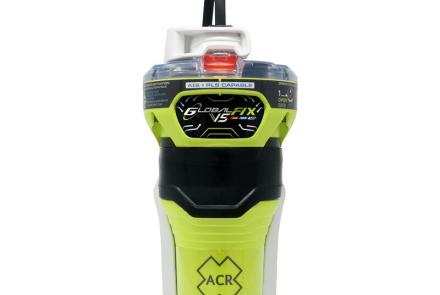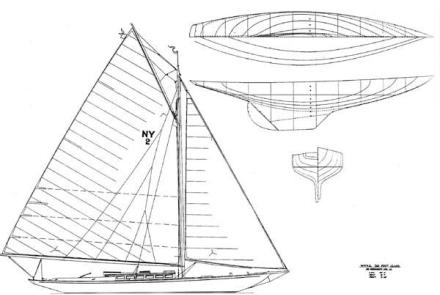Permanently-Rigged Preventer for Offshore Yachts
A permanently rigged preventer is always operational and does not require detachment and reattachment in order to jibe. It prevents an accidental jibe and allows control of the boom throughout a jibe. It can stabilize the boom in rough weather.
Whenever a preventer is not rigged there is risk of an uncontrolled or unintended jibe. When the wind is just by the lee at the very beginning of a jibe the force against the roach of the mainsail is minor, and it takes very little to prevent the boom from swinging over. Once the jibe starts and the boom begins to swing, even in light air, force rapidly builds as the boom accelerates across the boat and at the end of the jibe the force is significant. The mainsheet may be equally dangerous if it crosses the cockpit, cracking like a whip.
The reason for a permanently-rigged preventer:
This CCA Fleet Surgeon was struck with the seriousness of the problem during the 1989 Marion Bermuda Race when a pediatrician at the helm of a fellow neurosurgeon’s boat died within minutes from a head injury by the mainsheet during an accidental jibe at night. The binnacle was also badly damaged.
The following is an anecdotal list of similar fatal accidents in familiar racing venues, and there are many examples among coastal and offshore cruisers.
-
1979 SORC boom injury
-
1981 Practice - USCG Acad Sailing Team boom injury
-
1989 Marion Bermuda Race mainsheet injury
-
1992 Cowe’s Week mainsheet injury
-
1996 Antigua Race Week mainsheet injury
-
1998 Ft. Lauderdale-Key West Race boom injury
-
2007 Atlantic Rally for Cruisers (ARC) boom or mainsheet injury
-
2010 Fishers Island Labor Day Race (Mumm 30) boom or mainsheet injury
-
2011 J World San Diego on (J 124) boom or mainsheet injury
In 1990, a USNA midshipman remained in coma after a head injury during an accidental jibe, and was never able to return to school.
Equipment, set-up and operation of a permanently-rigged preventer
Phil Garland, at Hall Rigging, Bristol, Rhode Island, designed the following permanently-rigged preventer for our Morris 46. It could be easily adapted to any offshore cruising or racing boat. It is simple to operate, inexpensive and was used in four Newport Bermuda Races, two roundtrip transatlantic passages, and coastal cruising.
Page BreakDesign
Preventer lines set-up on a Morris 46 (DIVA)
Equipment
-
A pad eye or bail on the undersurface of the boom aft of the vang (about 1/3 distance from gooseneck to boom end – but the exact location is not critical);
-
2 blocks on the deck, one on each side located in the vicinity of the shrouds (will vary with boat);
-
2 line stoppers, one each side, located by cockpit in easy reach of helmsman
-
2 lines long enough (about half the length of the boom plus the distance from the deck block to the line stopper plus several extra feet)
Set-up
Both preventer lines start at the pad eye or bail on the boom, one running forward to the block and then aft to the line stopper on the starboard side, the other running similarly on the port side. On our Morris 46, a piece of PVC tubing on the aft lower shroud prevents line chafe.
Operation
The entire system can be run by the helmsman: releasing the old leeward line from the stopper before or during the jibe and tightening the line in the stopper on the other side as the jibe is completed. The helmsman can also trim the line as the mainsheet is let out or taken in. Occasionally, one of the lines hangs up on a Dorade. Upwind both lines are slack and do not need attention. The initial force of the jibe is minor compared to the full force of the jibe after the accelerating boom has crossed the centerline. The preventer is also used, in conjunction with the mainsheet, to stabilize the boom while crew stand on the cabin top to furl the mainsail.






